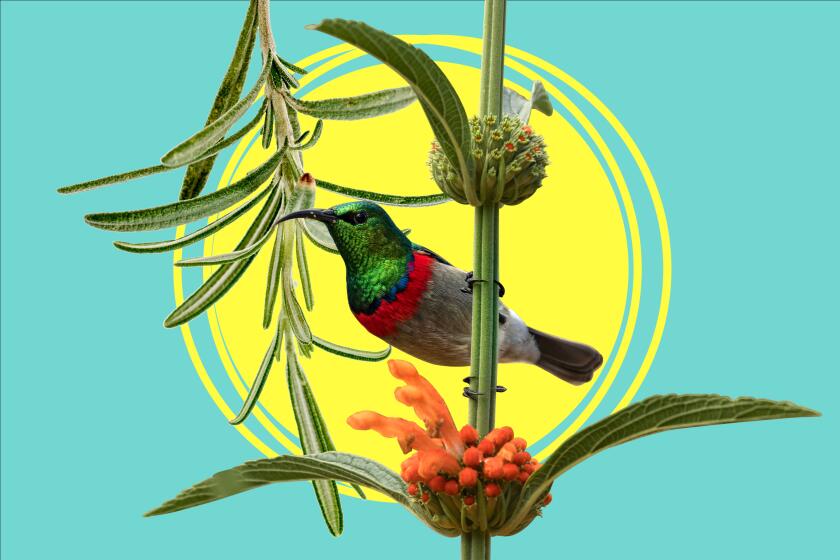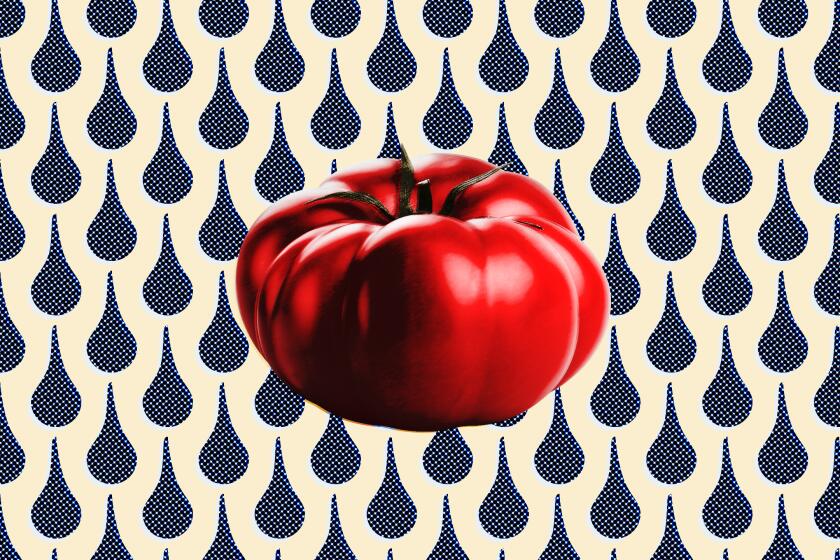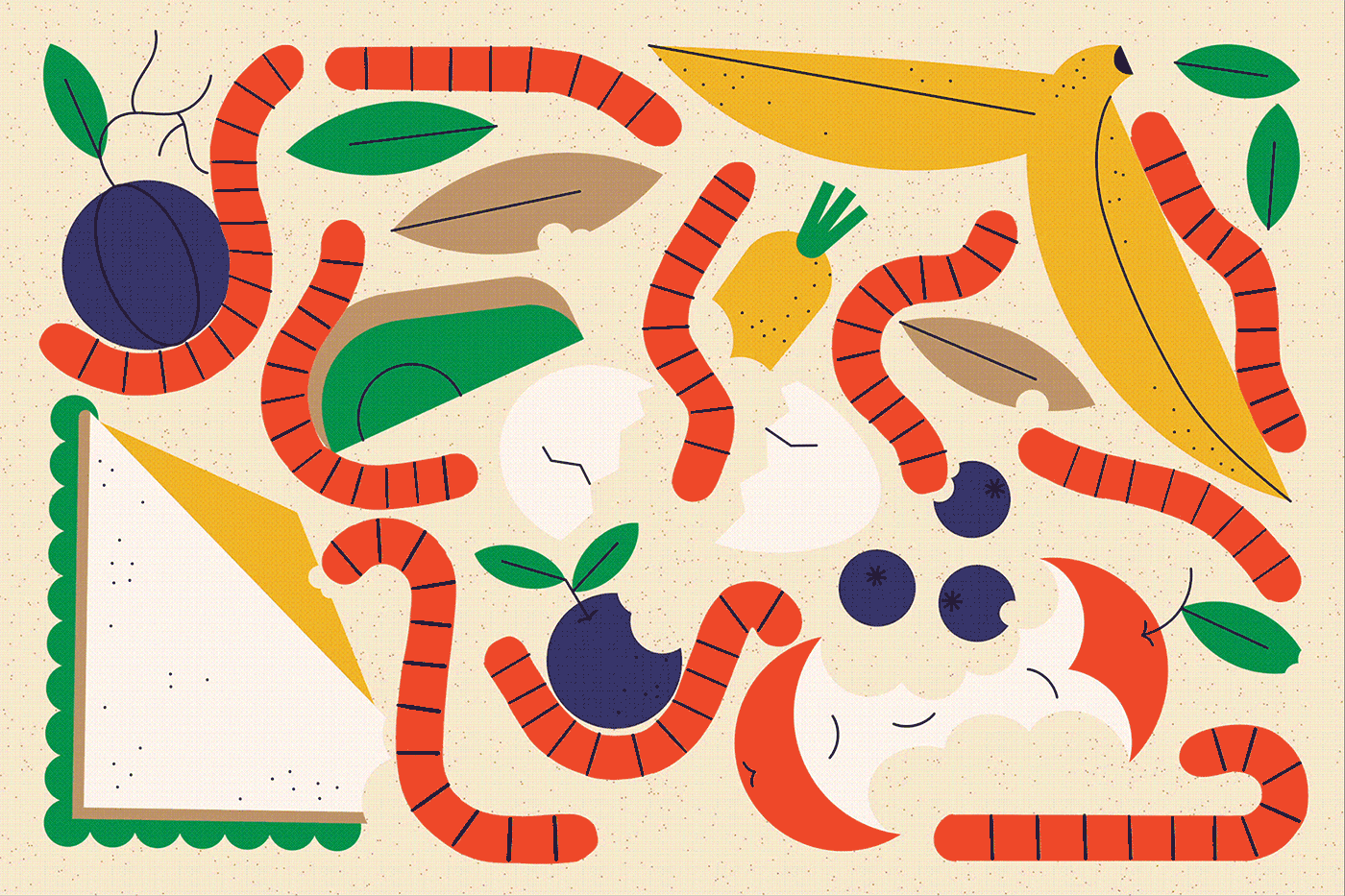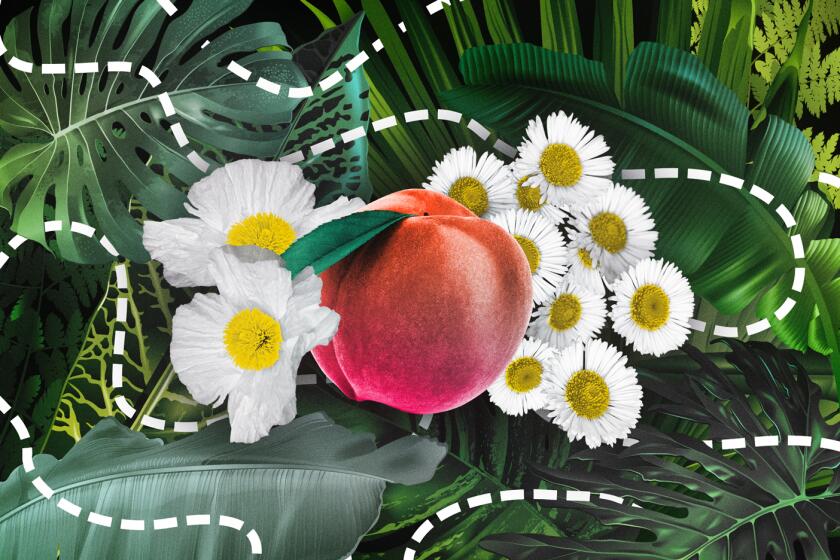20 California native plants that will actually look gorgeous this summer

- Share via
You know how it is when things get too hot. Your face gets red, your hair goes limp and you basically just shut down, conserving energy and waiting for something cool and wet to bring you back to life.
That’s pretty much how many plants native to Southern California respond to the heat of summer. They have evolved to grow and thrive in the cooler wet months, bloom their hearts out in the spring and then withdraw and wither in the heat, biding their time until the high heat goes away and the (recently mythical) winter rains begin.
But there are yard-worthy native plants that bloom in the summer, or just look super no matter the season, so when you’re planning your new low-water garden, here are a few quick-growing natives to consider, as recommended by Tim Becker, horticultural director of the Theodore Payne Foundation, and Evan Meyer, the foundation’s executive director.
Drought-resistant plants like hummingbird sage and rosemary are the ideal addition to Southern California gardens.
Trees
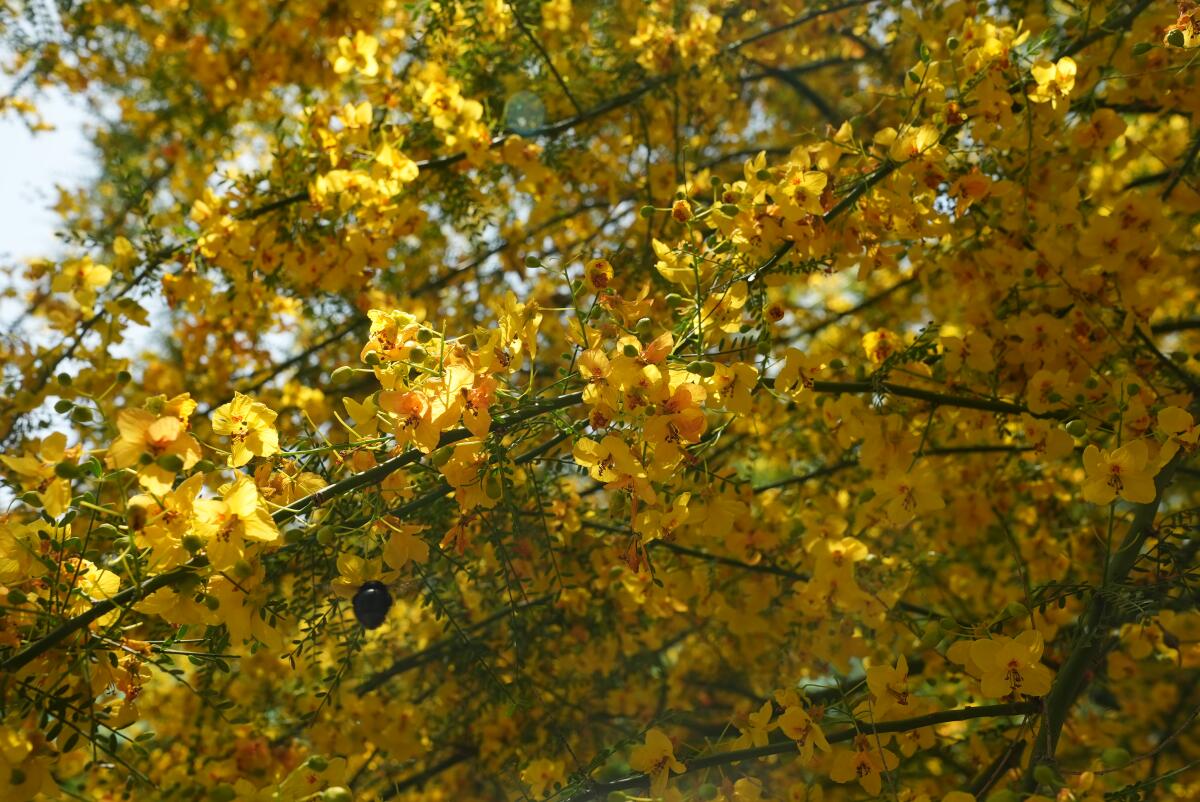
1. Palo Verde Desert Museum (Cercidium ‘Desert Museum’) is a thornless hybrid of the palo verde tree that is covered with bright yellow flowers in spring (and early summer with irrigation) but looks lovely even without blooms with its smooth, pale-green trunk and leaves.
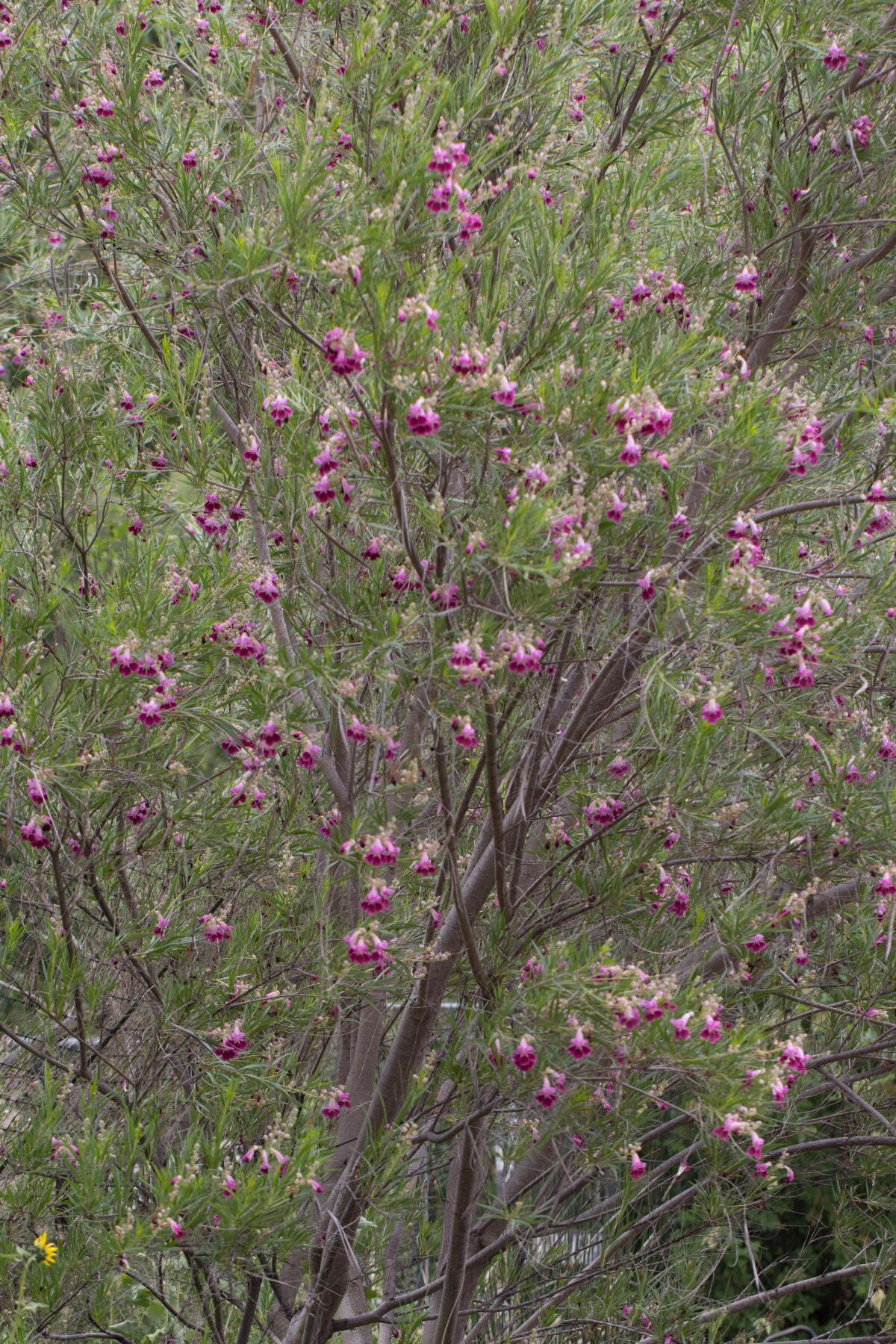
2. Desert Willow (Chilopsis linearis) is a smallish tree that is winter deciduous, meaning it loses all its leaves in the winter but has showy deep-throated blooms beloved by hummingbirds once it leafs out in the late spring and summer. A particularly showy variety is burgundy desert willow (Chilopsis linearis ‘Burgundy’) with deep red-fuchsia-colored blooms.
Shrubs
In the summer, buckwheats and salvias reign supreme, using little water (once established) while giving pollinators plenty to keep them busy happily buzzing around your yard. Some great shrubs that handle summer well include:
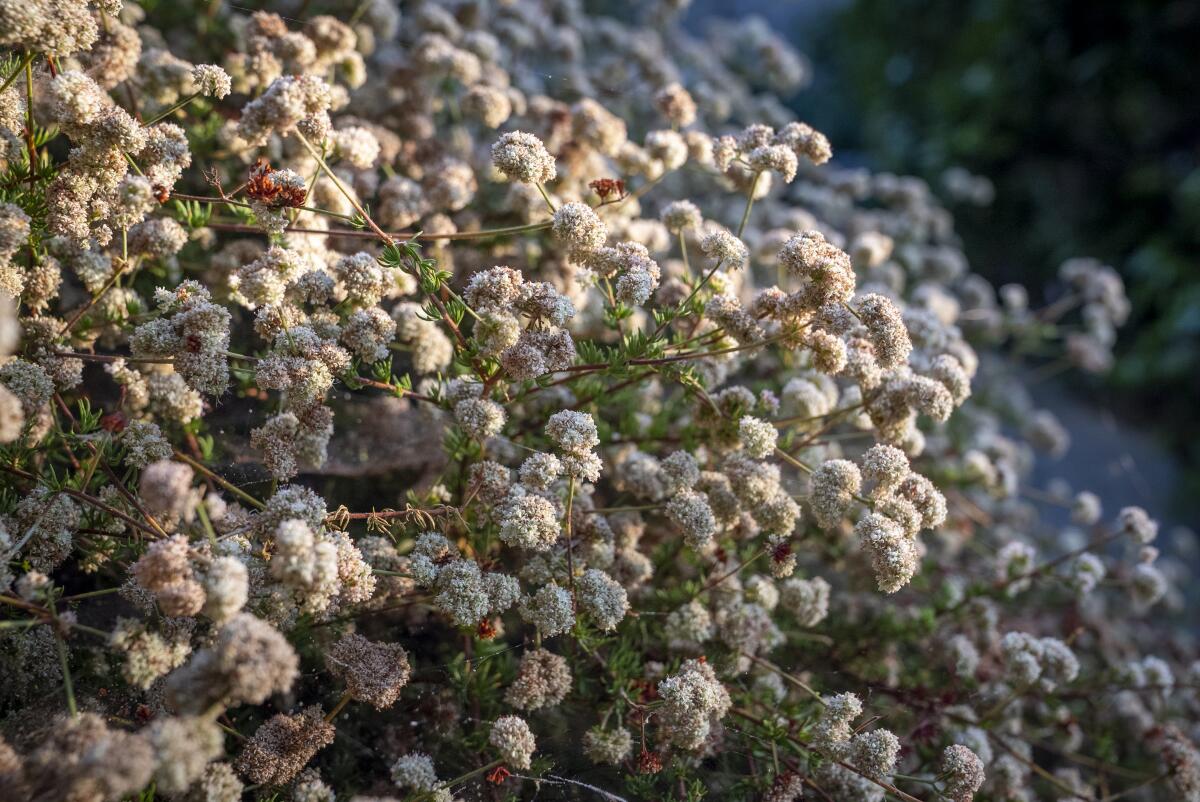
3. California buckwheat (Eriogonum fasciculatum), with its salmon-pink-tinged clouds of blooms, springs through summer. It’s a pollinator favorite and must for every SoCal habitat garden.
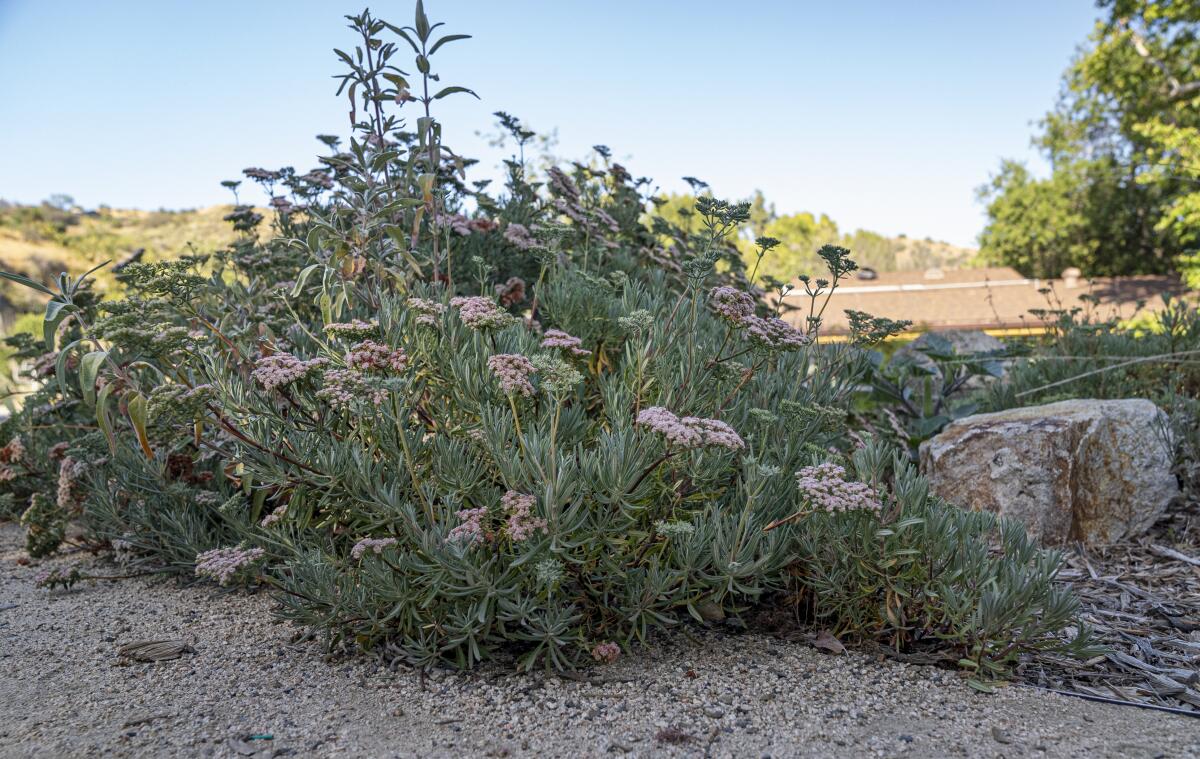
4. Santa Cruz Island buckwheat (Eriogonum arborescens) is studded with darker pink clusters of flowers that dry to a handsome rust color in the fall.
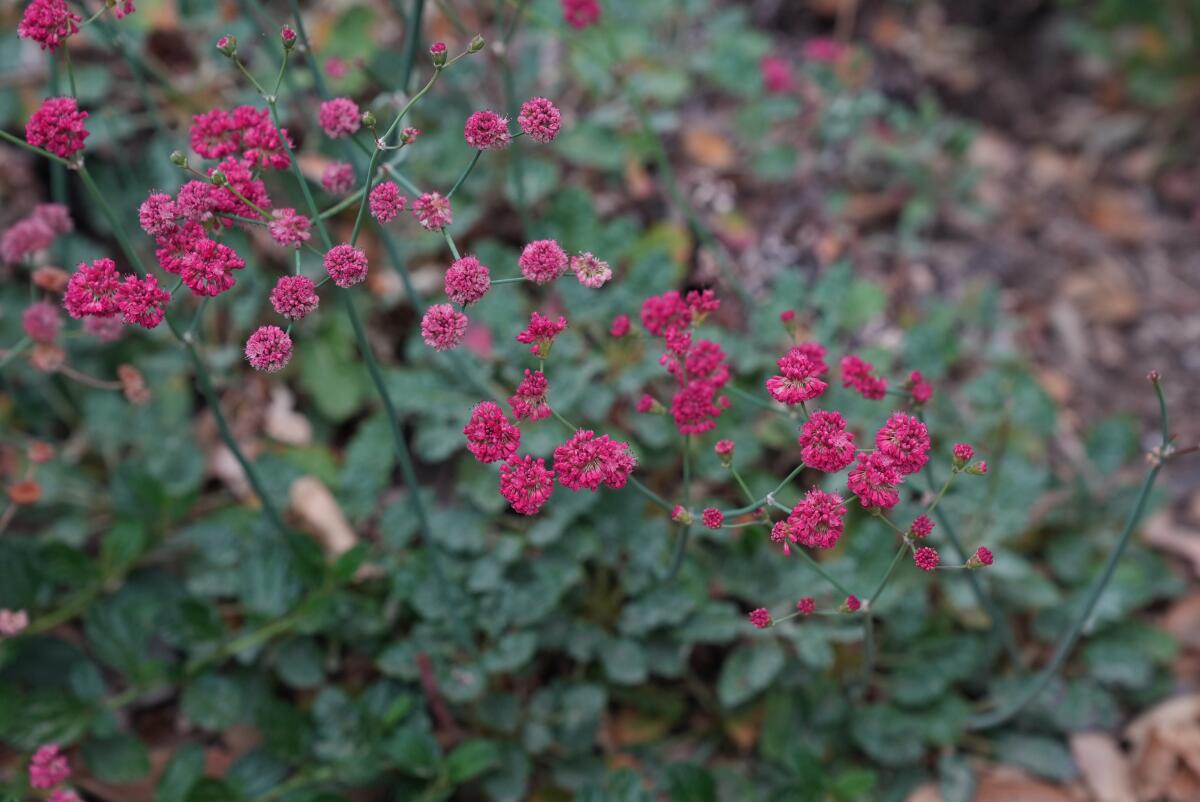
5. Red-flowered buckwheat (Eriogonum grande var. rubescens) has a mounding growth of dark green leaves that blooms spring through fall with raspberry-colored flowers on tall thin stems.

6. Conejo buckwheat (Eriogonum crocatum) has silvery green foliage and “burn your eyes” yellow flowers that bloom spring and summer.
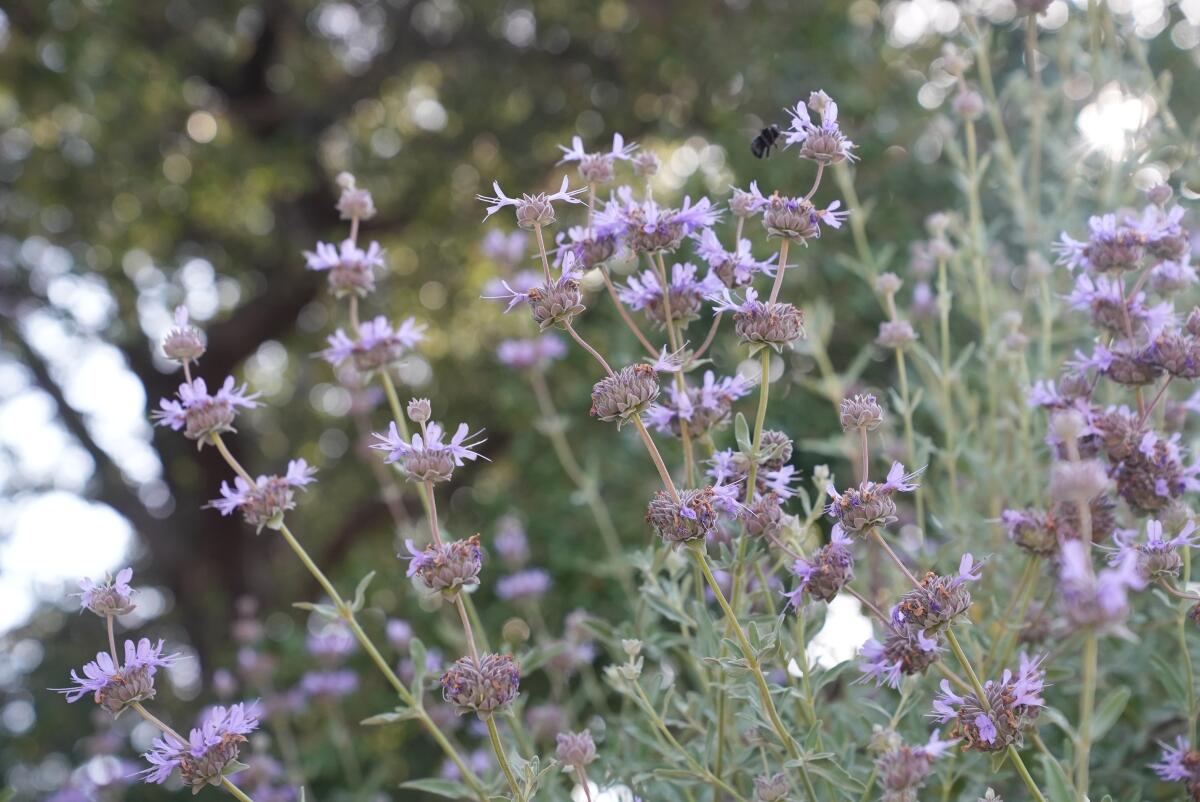
7. Cleveland Sage (Salvia clevelandii) is hard to beat for fragrance and drama with puffs of bright purple flowers that turn into sculptural seedpods in the late summer and fall.
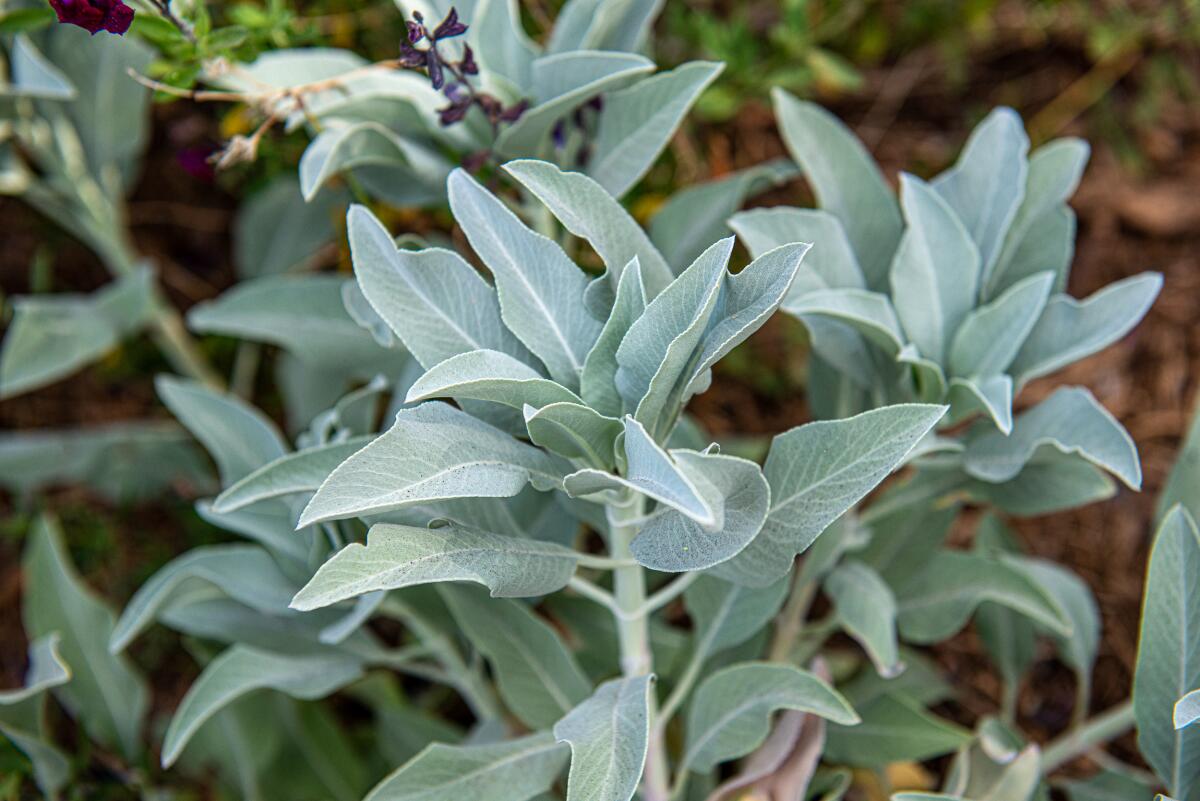
8. White sage (Salvia apiana) flowers spring through early summer with tall arcing white blooms, and then shines in the garden with its silvery leaves the rest of the year, a handsome contrast to deeper green shrubs.
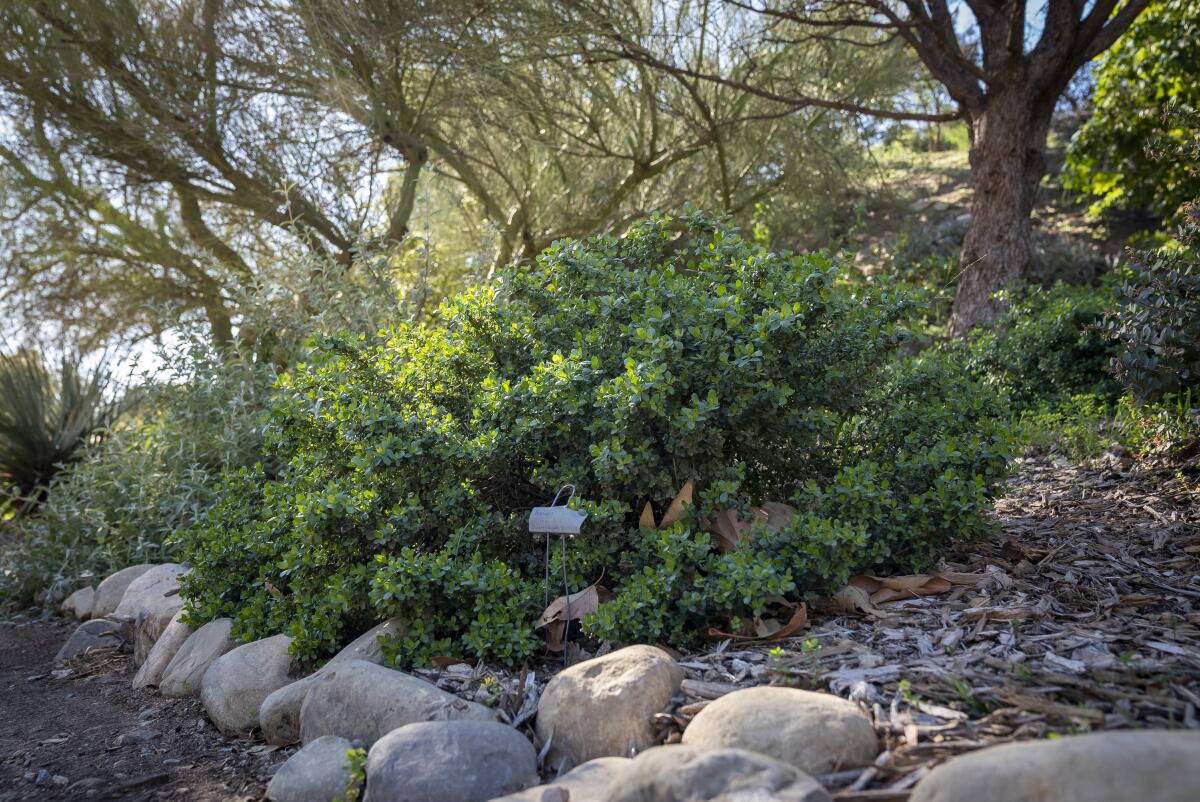
9. Pigeon Point coyote brush (Baccharis pilularis ssp. pilularis ‘Pigeon Point’) is a tidy cultivar of the more unruly but very pollinator-friendly coyote bush (Baccharis pilularis) found throughout the wilds of Oregon, California and Baja California. Pigeon Point has bright green foliage, a nice mounding growth and creamy flowers that bloom summer through winter. It looks especially nice interspersed with silvery plants like white sage.
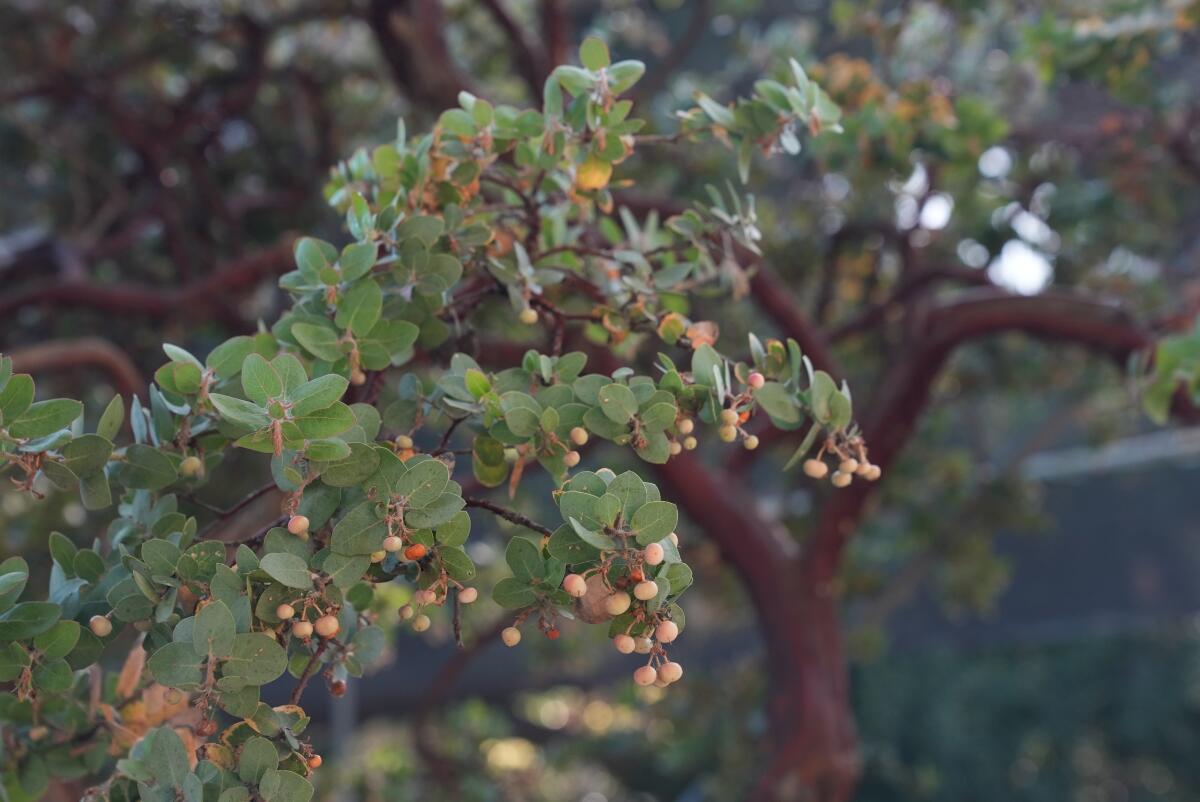
10. Manzanita John Dourley (Arctostaphylos ‘John Dourley’) is a low-growing shrub that gets up to 2 feet tall with the manzanita’s distinctive mahogany limbs, blue-green leaves and bronze-colored new growth that makes the plant attractive spilling over a wall or covering a bank, even when it’s not blooming in the winter (December-March).

11. Coulter’s Matilija Poppy (Romneya coulteri) is best known for its huge, extraordinary flowers with crepey white petals and a bright yolk-colored center, making them look like giant fried eggs. (Hence the nickname, “fried egg plant.”) These shrubs can grow at least 6 feet tall and twice as wide, with jagged, gray-green stems and leaves. They can spread aggressively, so consider them for slopes or backgrounds that need some drama. Becker says the plants are easier to restrain if you don’t cut them; otherwise the regrowth seems to double the plant’s size and unruliness, but one or two in your yard always draws compliments.
As Southern California’s drought conditions worsen, Los Angeles gardeners can keep their vegetables growing amid water restrictions with these tips.
Hedge makers
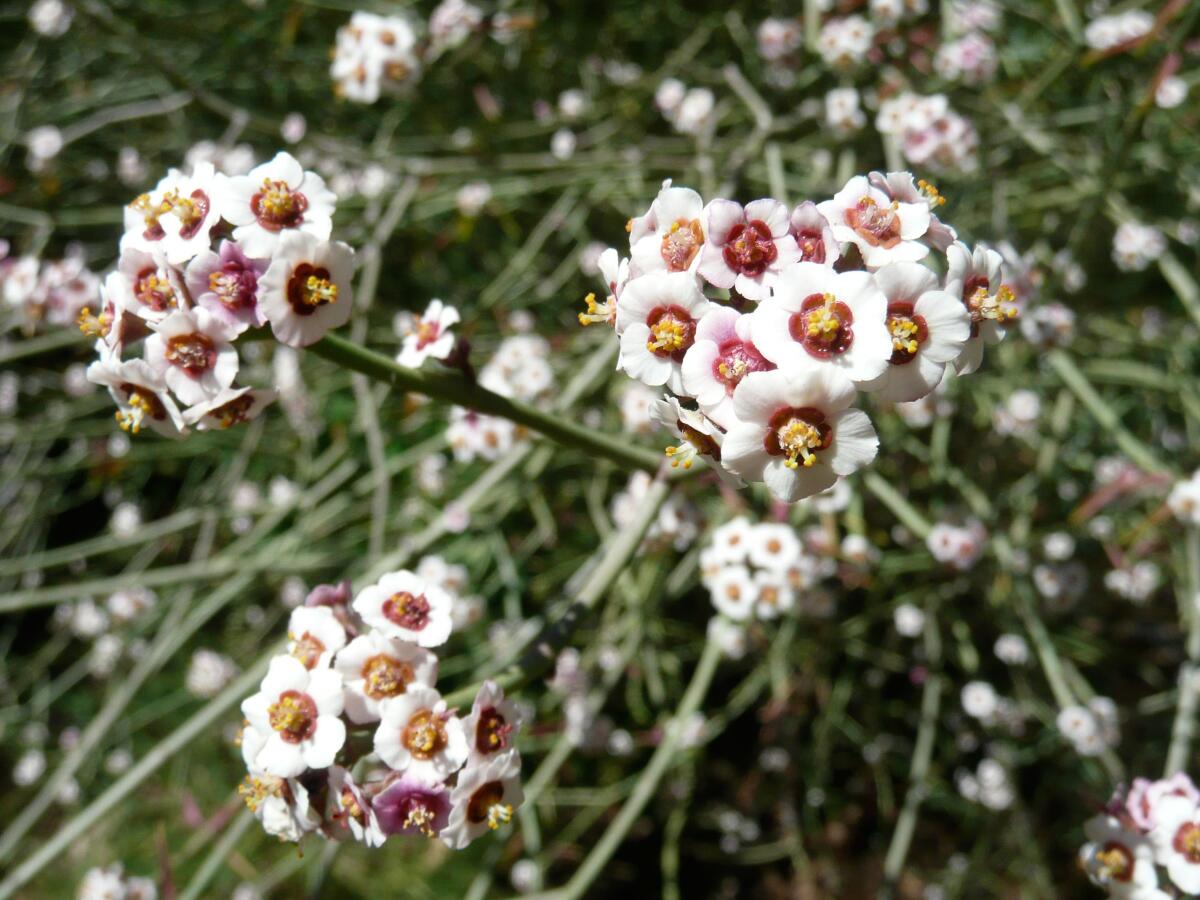
12. Baja spurge (Euphorbia xanti) is an excellent replacement for bamboo hedges, Meyer says. It flowers profusely January through August, and if allowed to spread, has tall dense foliage that birds love for shelter and people like for privacy. It also works in containers with clouds of tiny pink-magenta flowers.
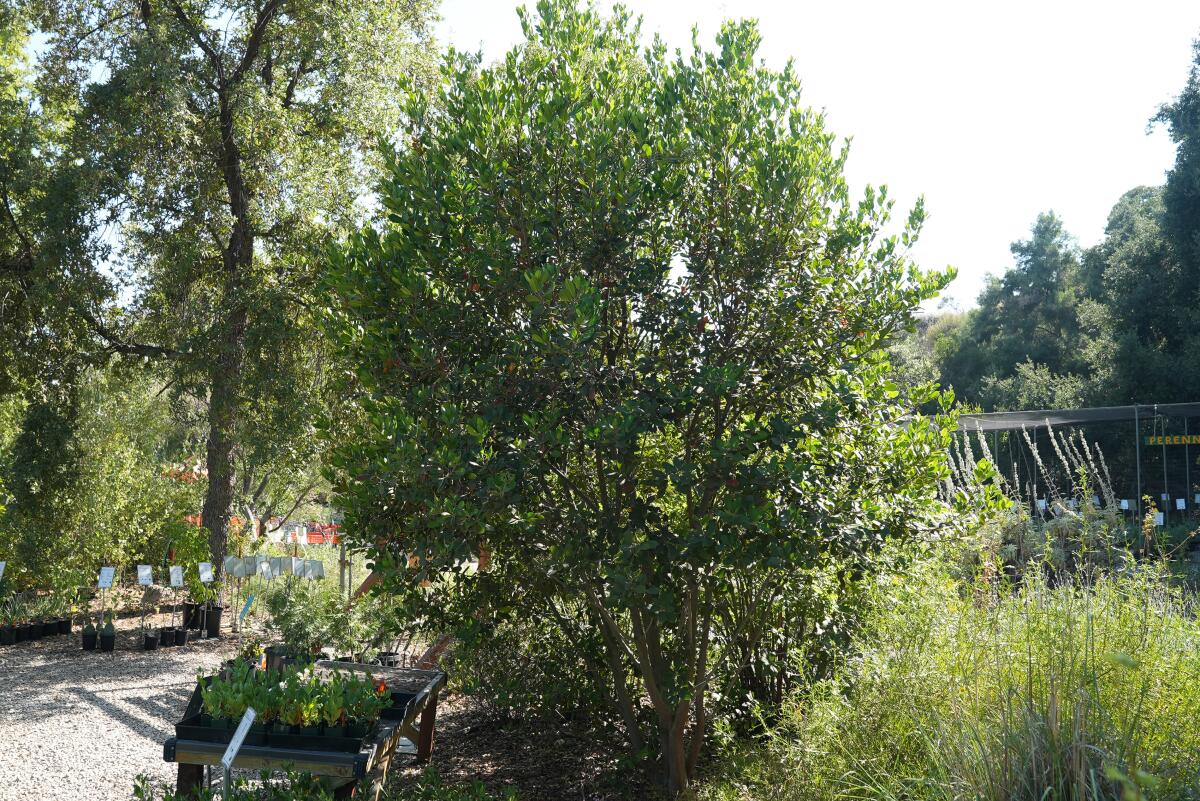
13. Toyon (Heteromeles arbutifolia) also known as California holly, is a great habitat plant and looks fabulous year round with its deep-green leaves that resemble holly. In summer it’s covered with white clusters of flowers — very attractive to pollinators — which turn into bunches of bright red berries that attract many kinds of birds in the fall and winter. This large bush can get big — 10 to 20 feet at least — so be mindful where you plant it.
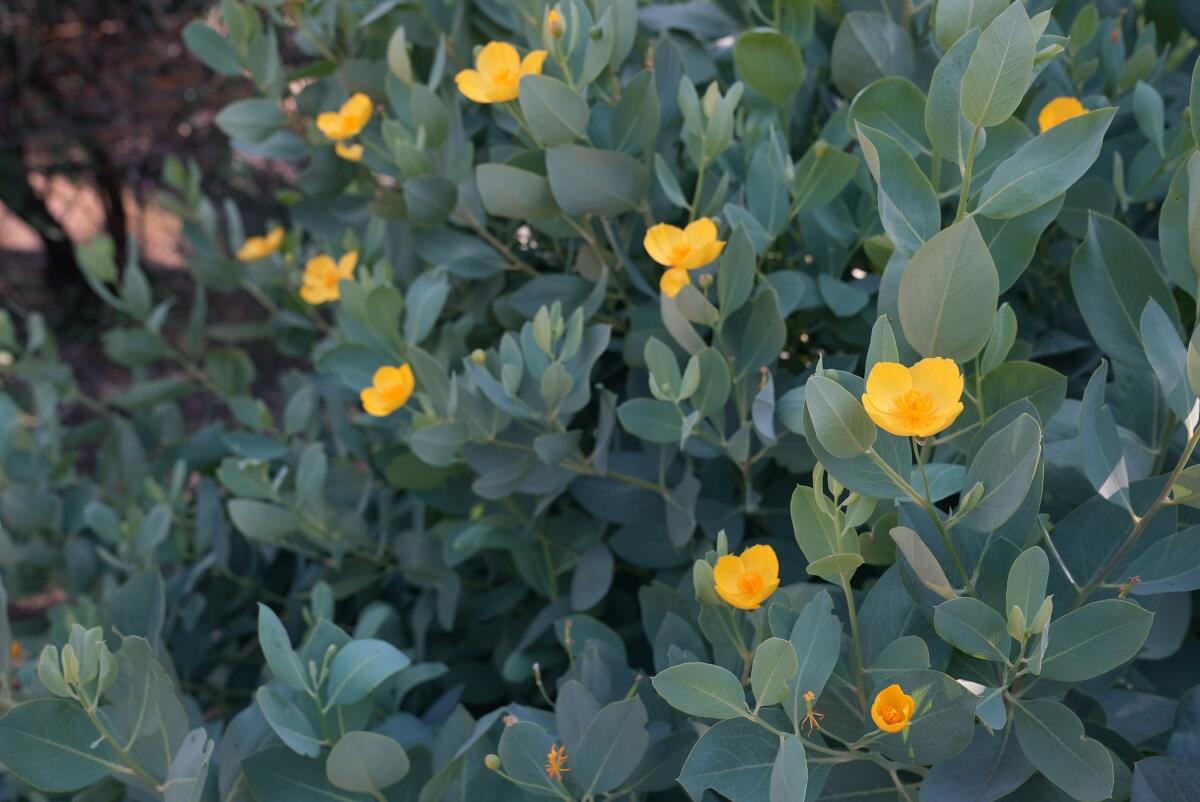
14. Channel Islands tree poppy (Dendromecon harfordii) is a bright green shrub covered with sunny-yellow, cucumber-scented flowers spring through fall. It’s very fast growing and can reach at least 12 feet, but it’s easy to shape, Meyer said. Keep it pruned in winter to control its height. This works great as a standalone shrub but would be beautiful as a hedge too, says Becker, “especially in a part-shade area inland, trimmed frequently enough to make it bushy.”
Worm composting, or vermicomposting, turns food waste into worm castings that are great for garden soil. Here’s how to start worm composting at home.
Flowers
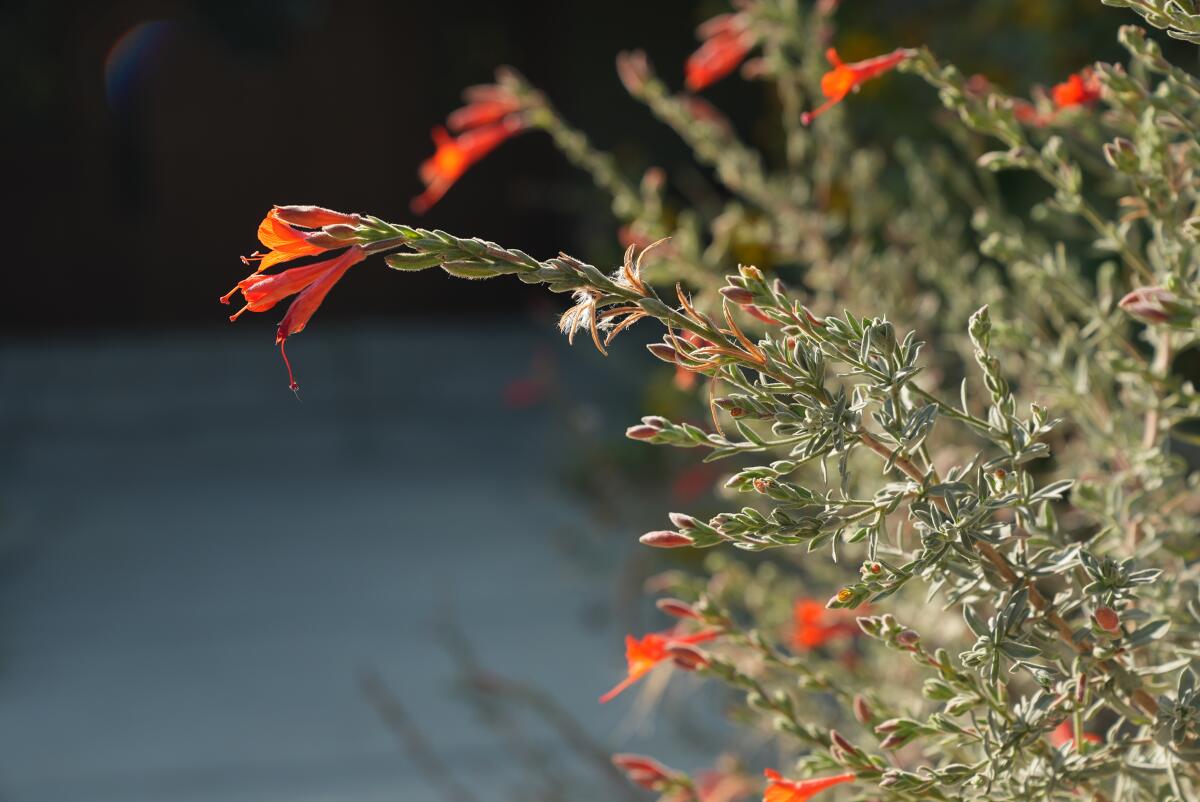
15. California fuchsia (Epilobium canum) are probably the most popular native flowers for hummingbirds, according to the California Native Plant Society’s Calscape database. It blooms profusely in summer and fall with thin, bright red trumpet-shaped flowers and provides a shaggy, silvery green ground cover that looks good mixed with other plants in the spring. These plants will reseed, but around Dec. 1, cut them down completely to create vibrant new growth for the coming year.

16. Desert marigold, a.k.a. wild marigold (Baileya multiradiata) is a sunny yellow flower good for rock gardens and accents that blooms on tall thin stems spring and summer. This annual or short-lived perennial species will begin self seeding throughout your garden once established. Just remember, too much water will kill this plant.
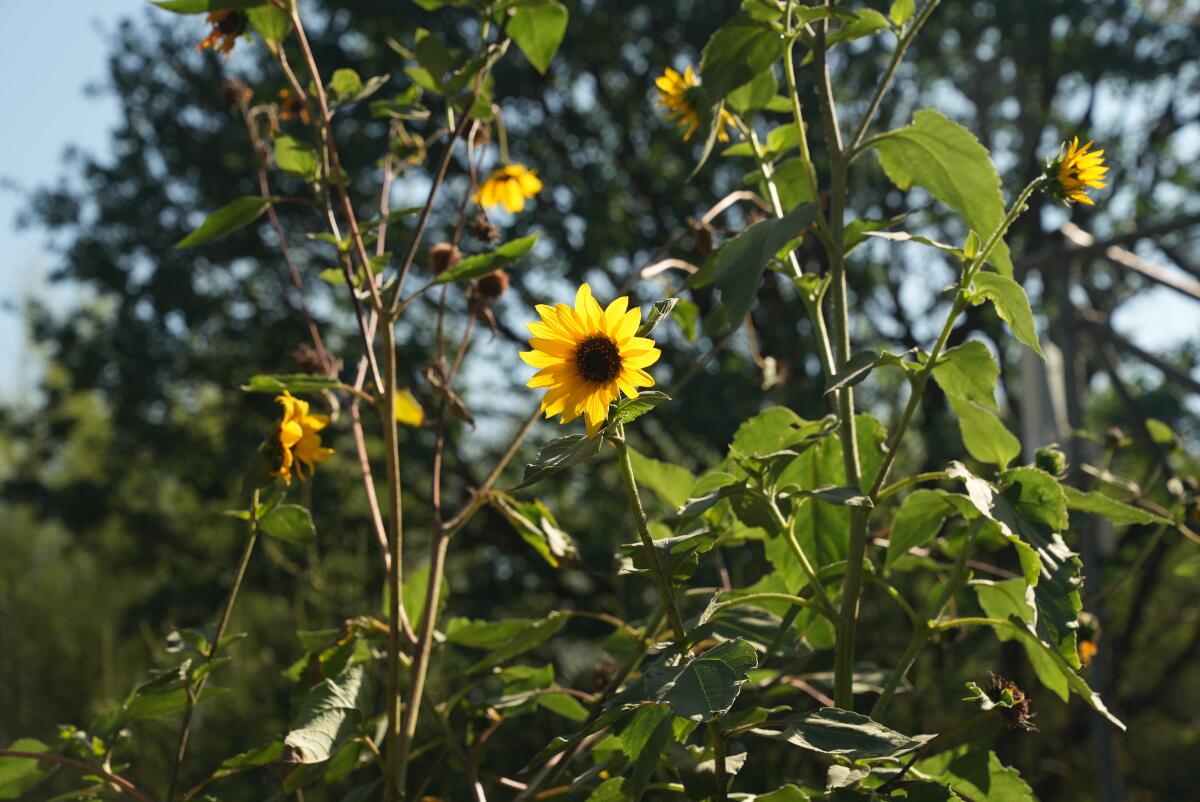
17. Common Sunflower (Helianthus annuus) is a tall, many-flowered sunflower native to Southern California. It blooms through summer but may need some support not to fall over. This plant can look a little unkempt, Meyer said, but its large yellow flowers enliven a late summer garden, and the birds will love you for the seeds. Try interspersing it with shorter plants and a little pruning to keep it looking tidy. Stakes may help too.
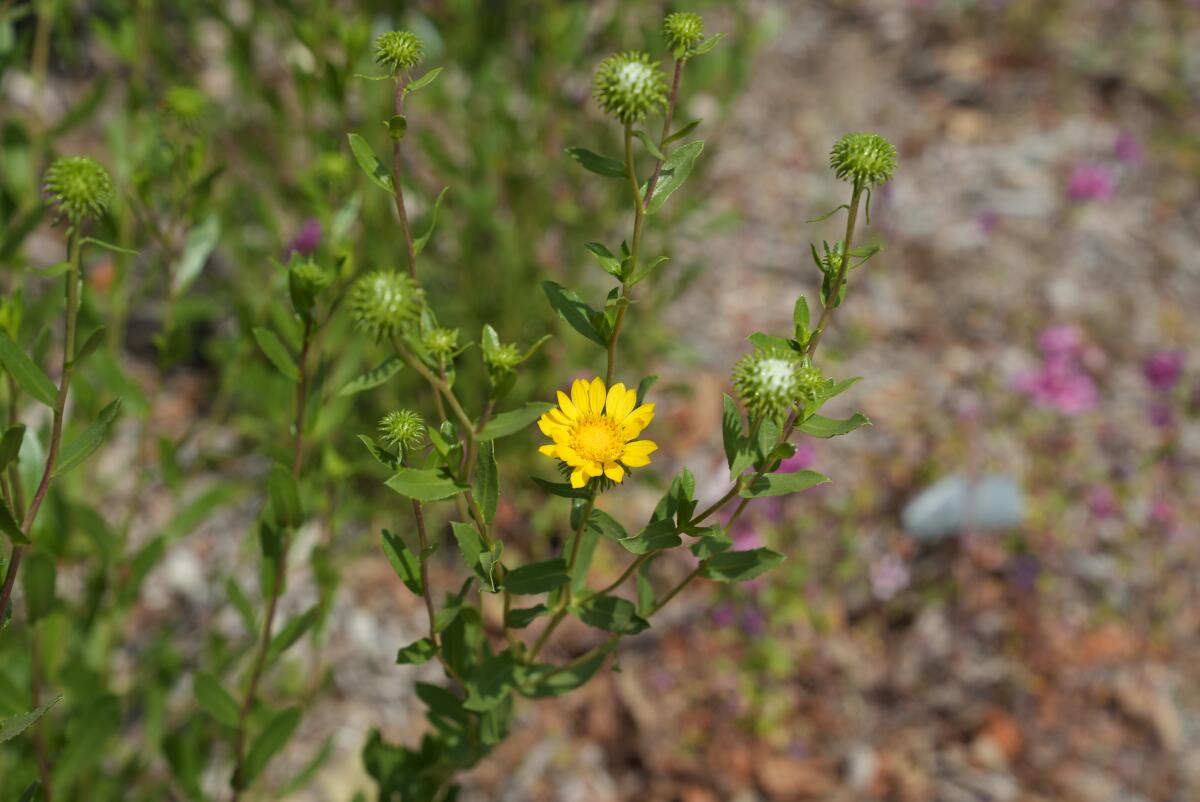
18. Gumweed (Grindelia stricta var. platyphylla) is a compact spreading version of the sunflower, growing less than 2 feet tall, with bright green foliage and cheerful yellow flowers that bloom throughout the summer.
Finding your favorite nursery can be thrilling. Here are our picks for the best independently owned plant nurseries near Los Angeles.
Grasses
We’re not talking lawn here, but native grasses whose tall airy seed heads capture the light and add interesting texture and accents to the garden.
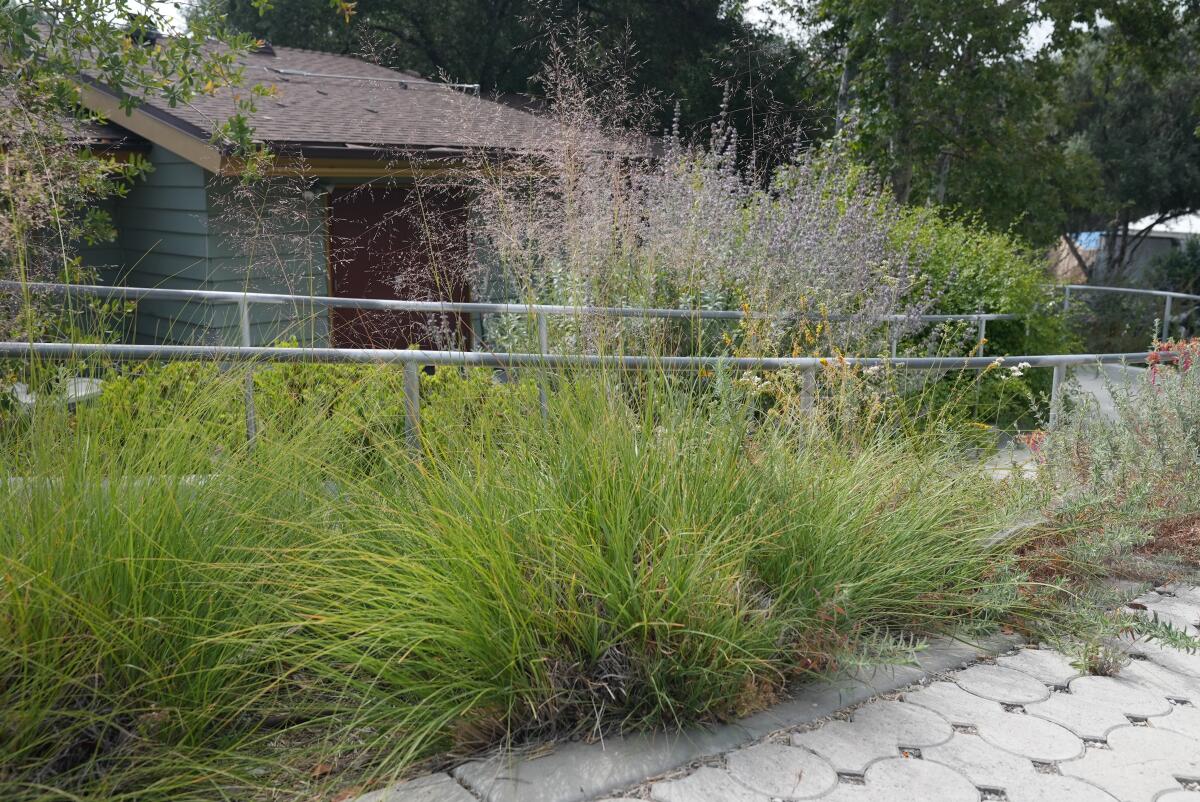
19. Alkali Sacaton (Sporobolus airoides) is a stalky green grass that can grow up to 3 feet tall, with delicate purplish seed heads that resemble a fountain spray.
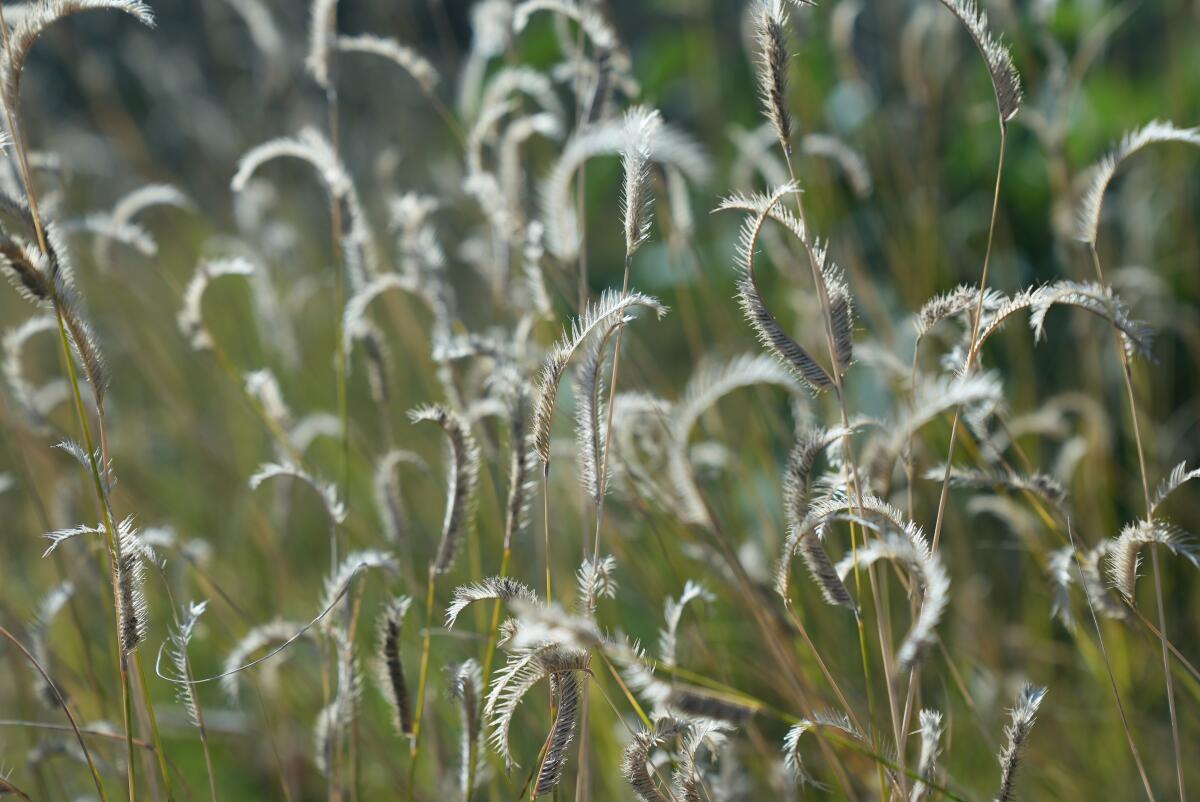
20. Blue Grama (Bouteloua gracilis) grows in tall clumps of green, with cheerful light purple seed heads that resemble pennants, sometimes curling into circles or half circles. One popular cultivar is “Blond Ambition,” pictured above.
More to Read
Sign up for The Wild
We’ll help you find the best places to hike, bike and run, as well as the perfect silent spots for meditation and yoga.
You may occasionally receive promotional content from the Los Angeles Times.
